- The National Oceanic and Atmospheric Administration (NOAA) has published a report laying out a strategy to allow the use of “ropeless” or “on-demand” fishing gear off the U.S. East Coast with the goal of reducing entanglements of the critically endangered North Atlantic right whale.
- The gear uses acoustic signals to locate and retrieve gear, reducing the amount of time that vertical lines are present in the water column, where they can ensnare right whales and other types of marine life.
- Right whale numbers in the North Atlantic have declined precipitously in the past decade, as collisions with ships and entanglements have killed individuals and hampered the species’ ability to reproduce.
- NOAA’s Ropeless Roadmap estimates that on-demand fishing gear can substantially diminish the risk to right whales, while allowing economically and culturally important fisheries of the northeastern U.S. to continue.
A spate of North Atlantic right whale deaths that began in 2017 shook the scientists who study the critically endangered species. That year, 17 whales died, and the losses prompted the U.S.’s National Oceanic and Atmospheric Administration (NOAA) to declare an “unusual mortality event” for them, which remains ongoing. In the years since, at least 54 have perished or sustained injuries so severe that they weren’t expected to live.
The culprits in most of these deaths, when possible to discern, have been ship strikes and entanglements in fishing gear, in roughly equal measure. Together, these hazards have helped spark a decade-long decline in the population of North Atlantic right whales (Eubalaena glacialis), from a post-whaling peak of nearly 500 animals in 2011 to just 336 today.
Guidelines already require large boats to slow down through right whale hangouts to minimize collisions, and the U.S. government is moving to broaden those restrictions. And government regulators, fishers, scientists and engineers in the U.S. and Canada are also trying to address the entanglement part of the equation. Especially since the whale deaths of 2017, key groups have increasingly thrown their support behind novel “ropeless” — more recently called “on-demand” — fishing gear that reduces the need for vertical ropes that attach lobster and fish traps on the ocean floor to buoys at the surface.
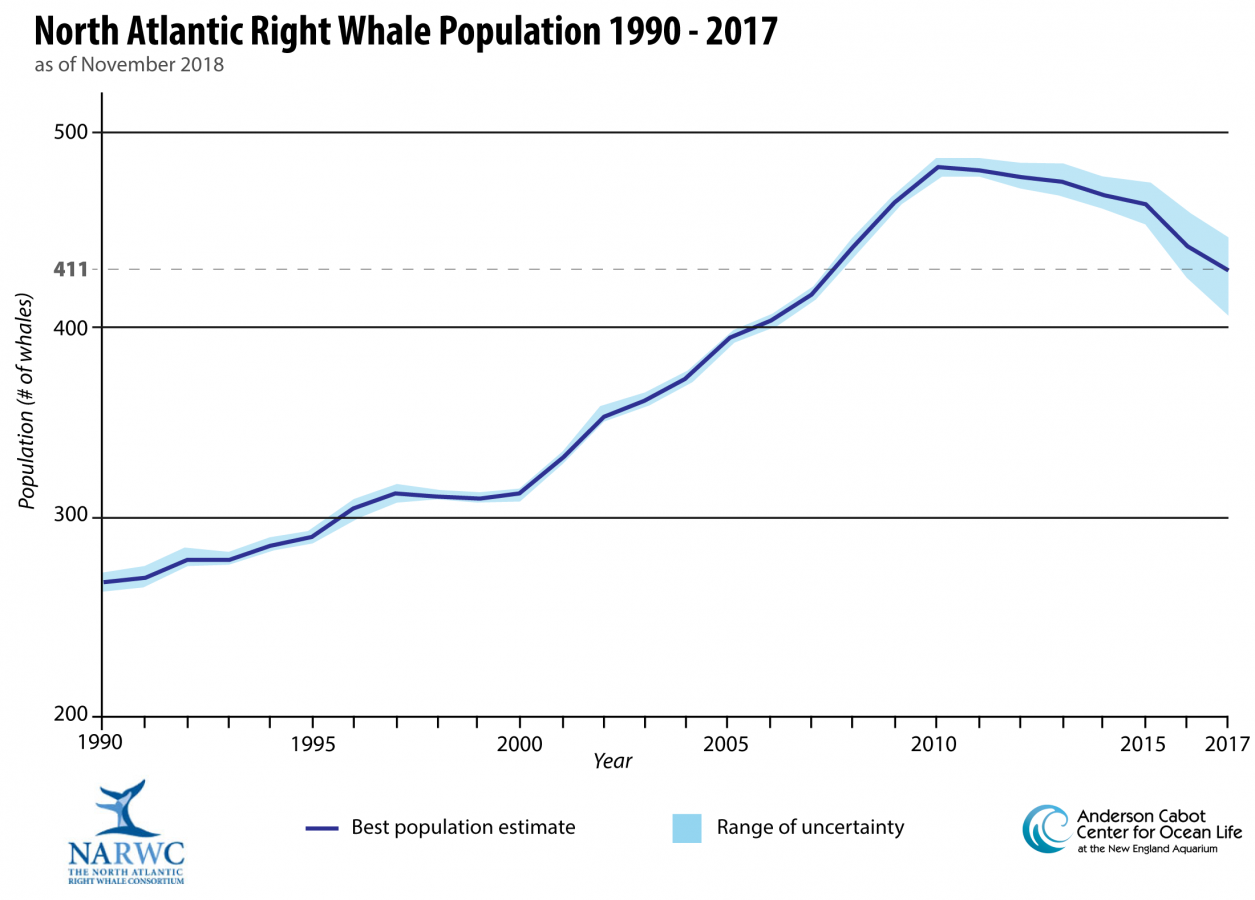
On July 29, NOAA released a draft Ropeless Roadmap, laying out the technological and regulatory hurdles facing the adoption of this new fishing gear. Scientists and fishers alike say the use of on-demand gear could give the North Atlantic right whale the reprieve from entanglement it needs to survive. The gear would also allow U.S. trap and pot fisheries, primarily for lobster but also for bottom-dwelling fish, to return to right whale hotspots they’ve been excluded from. These fisheries are the long-standing economic anchors of many communities along the eastern coasts of the U.S. and Canada.
The road map outlines a targeted approach to expanding the use of on-demand gear specifically aimed at allowing ropeless fishing in areas that are closed due to the risk the lines involved in traditional fishing pose to right whales. That would first happen under special permits allowing “limited access” for fishers to try out experimental gear, tentatively scheduled to launch in 2023, according to NOAA’s plans.
The end result might involve highly adaptive and real-time recommendations from scientists indicating places where only on-demand fishing should be allowed because the use of traditional gear with persistent vertical lines would be too dangerous for the few remaining right whales.
“The ropeless roadmap that we’ve written does not envision on-demand fishing for everyone everywhere,” Michael Asaro, a social scientist with NOAA’s Northeast Fisheries Science Center in Woods Hole, Massachusetts, said during a presentation to the Atlantic Large Whale Take Reduction Team in August. The take reduction team works on plans to reduce the danger to whales from fishing gear and includes representatives from academia, conservation groups, federal regulatory bodies and the fishing industry.
“In short, we’re trying to provide tools for fishermen to fish in closed areas,” Henry Milliken, a research fishery biologist at NOAA’s Northeast Fisheries Science Center, said at the presentation.
But this strategy also relies on figuring out where and when right whales will gather to feed and socialize — questions that continue to vex scientists. With right whale numbers perilously low and continuing to plunge, the stakes are clear, said Asaro, the report’s lead author.
“There certainly is little room for error,” he told Mongabay. “Extinction is a very real possibility.”

A turning point
The decades leading up to the succession of right whale deaths that began in 2017 pitched veteran right whale researchers and cetacean conservationists through a seesaw of emotional highs and lows. In the early 1990s, head counts turned up fewer than 300 whales. By that point, centuries of whaling had taken their toll, and even decades after it had been banned, the population had yet to recover.
Then, as the 21st century began, those numbers began to creep upward. In 2011, there were nearly 500 animals. It appeared as though the right whale was slowly shrugging off the legacy of being targeted for so long.
But in the next few years, right whale numbers mystifyingly began to slide again, punctuated by the 17 deaths in 2017. That unusual mortality event began after scads of whales followed their favorite prey, tiny zooplankton called copepods, into Canada’s Gulf of St. Lawrence. That’s where they ran headlong into a snow crab fishery at full throttle, leading to a rash of entanglements in the industry’s heavy gear.
Through it all, scientists have maintained the hope that the North Atlantic right whales would be OK — if the ship strike and entanglement problems could be solved. Those steps could save the species as a whole and individual whales from what often amount to gruesome and fatal injuries. The blunt force impact of colliding with ships can lead to massive internal hemorrhages, and their propellers can slash through even a whale’s thick layer of skin and blubber. Becoming ensnared in fishing lines is another excruciating fate, scientists say, but unfortunately, most North Atlantic right whales end up entangled at least once in their lives. Entanglements can trigger festering infections, starvation and shearing lacerations tantamount to being flensed alive with each kick of a whale’s tail, all leading to a drawn-out death that takes six months on average.

Dragging around hundreds of feet of rope heavy enough to stand up to the weather and currents of the North Atlantic also costs the whales precious energy. If they do manage to shed the gear or learn to live with it, chances are good the encounter will weaken them. For females in particular, that means fewer resources to invest in reproduction, which is ultimately what the species needs, and a lot of it, to avoid extinction. Studies have shown females are now having fewer calves with longer intervals between them since the 1980s.
The animals face other challenges that, together with collisions and entanglements, make their watery home less hospitable. The world’s oceans are increasingly noisy, potentially affecting right whales’ ability to find food and each other. And the Gulf of Maine, the heart of their home range, is heating up faster than 99% of the world’s oceans, according to a 2015 study. That kind of temperature rise likely spurred the movement of copepods toward the crab-pot studded mouth of the St. Lawrence.

Still, right whales have shown the ability to cope with these sorts of changes, said Heather Pettis, a research scientist at the New England Aquarium in Boston and executive administrator of another cross-sectional group called the North Atlantic Right Whale Consortium.
“You’ve seen them figure out, OK, well, where’s the food now?” she said. “They found it, and they’re spending their summers there now.”
Those adaptations have convinced Pettis there’s hope for the species.
“If it’s really the human impacts, if we can get rid of those, the species will be fine,” Pettis said. “They will not only survive, but thrive.”
Five years ago, ropeless fishing gear was still a pretty hazy concept. The idea had been batted around for at least a decade, but people considered the prospect of fishing without ropes to be a “full-stop … sort of crazy idea,” Pettis recalled.
But the jarring spate of entanglement deaths made 2017 a turning point, and ropeless gear came into focus as the most feasible chance to avoid the wholly unpalatable alternatives of allowing the whale to go extinct or banning fixed-gear fishing outright.
Soon, an unlikely alliance between representatives from the research, regulatory and fishing communities began to coalesce around the development of ropeless gear, eventually forming the Ropeless Consortium. The group’s inaugural meeting in 2018 “was the first time that you felt like there’s buy-in on multiple levels from many stakeholders, industry, engineers, [and] scientists,” Pettis said.
Now, many members of those disparate groups see on-demand gear as perhaps the singular key to saving both the right whale and the economically and culturally important trap and pot fisheries that share the same swatch of ocean.
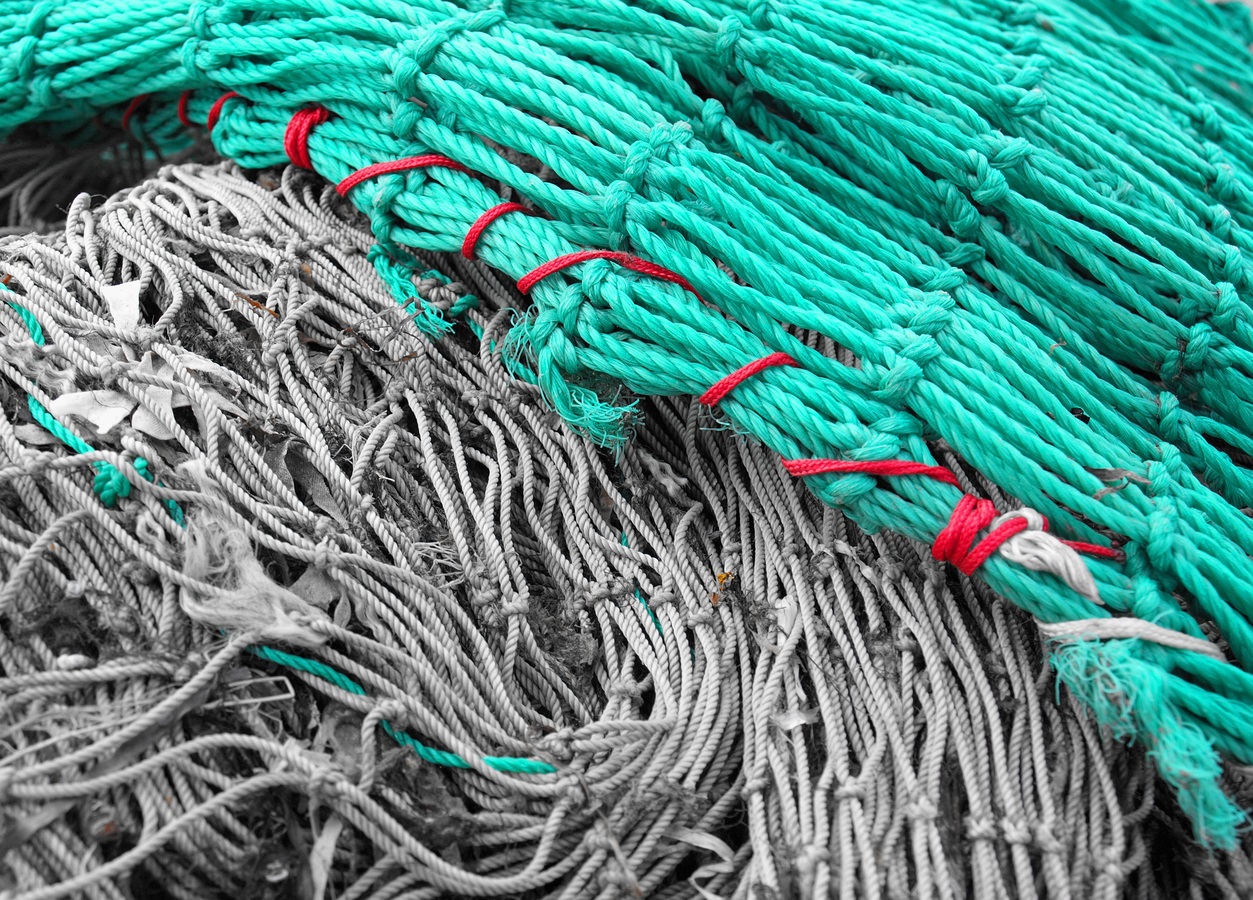
Pulling out of ‘the tailspin’
Today, when scientists find high concentrations of right whales in heavily fished parts of the ocean, regulators can close them to the fixed-gear fishing methods that pose the greatest threat to whales. Indeed, U.S. laws like the Endangered Species Act and the Marine Mammal Protection Act require such potentially drastic measures to protect marine mammals federally listed as endangered. In July, a U.S. court actually found the National Marine Fisheries Service (NMFS), which is administered by NOAA, had violated both laws because its assessment of the risk to whales from U.S. lobster and crab fisheries and the rules it came up with to regulate the industries hadn’t gone far enough.
From the other side, lobster industry groups from Maine and Massachusetts also recently sued the NMFS, charging that the same assessment “overstates the risks lobstering poses to the whale” and thus the fishing closures and other measures the service employed amounted to overly burdensome regulation. The same U.S. court that had ruled against the NMFS rejected the suit, arguing that the NMFS had indeed based its opinion on sound data and analyses.
With few other options in play, regulators often look to closures because they accomplish what they’re supposed to do, Pettis said.
“Right now, in a closed area, you have zero risk to right whales” from entanglements, she said.
But in the four years since the Ropeless Consortium formed, what’s now called “on-demand” fishing gear has evolved to the point where some say it can reliably catch seafood at a much lower risk to right whales. (Proponents say “on-demand” more accurately describes the gear because some designs still temporarily deploy vertical lines or rely on ground lines to string together traps on the ocean floor.) Most of the systems involve a deck-mounted transponder that sends an acoustic signal to the traps beneath. Depending on the system, the signal might then release a line a fisher can grab and use to haul up their catch when it reaches the surface.
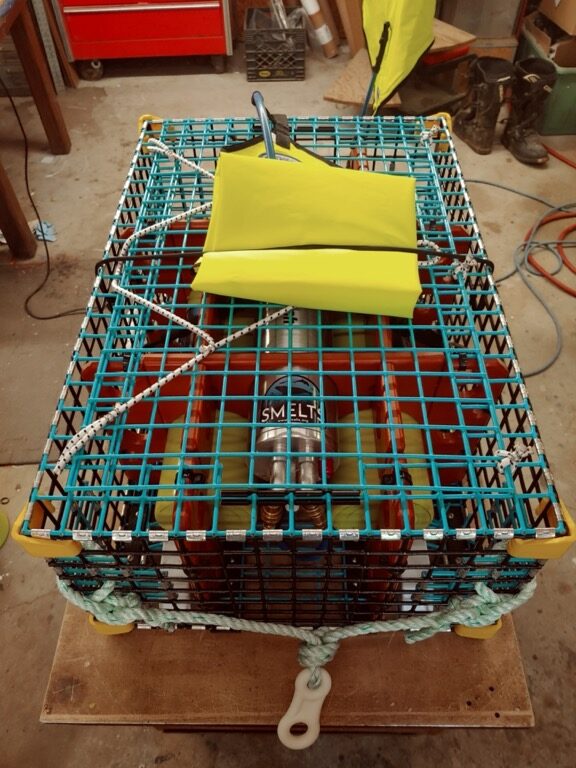
Supporters say the designs minimize the risk to right whales so much that they could allow fishers to safely work areas otherwise closed to fixed-gear rigs. NOAA estimates that replacing even a fraction of traditional fishing setups with on-demand versions in high-risk areas could reduce the chances of right whale entanglement by as much as 90%, according to the Ropeless Roadmap.
“If we could reduce by 90% the mortalities across the entire range of the animals, it would make a big difference,” said Charles “Stormy” Mayo, senior scientist and program director at the Center for Coastal Studies in Provincetown, Massachusetts. If the risk of ship strikes could somehow also be cut by 90%, he added, “My guess is that these animals probably … could pull out of the tailspin they’re in.”
However, reducing the risk by that much is hardly certain. A vital ingredient is knowing where the whales are going to be and at what time of the year, so scientists and advisory groups like the take reduction team can flag those areas as high risk and consider whether to recommend fixed-gear fishing closures. And yet, a fundamental question still dogs scientists, Mayo said.
“Where are the areas? We don’t know,” he said. “I am flummoxed by that, and I’m not the only one. The entire field is.”
The calculations in the road map leading to that 90% figure were based on the risk maps as they existed in mid-2021. But right whales are unpredictable, and figuring out where they might be in the future — for example, at the beginning of the next fixed-gear fishing season — is difficult.
Scientists do know that around half of all known right whales can gather in Cape Cod Bay each year from February to May. The Center for Coastal Studies documented the presence of at least 10 of 15 females that had calves in 2022.

“Cape Cod Bay is obviously absolutely critical to right whales,” Mayo said, and the whales seem happy to return year after year during the Northern Hemisphere’s winter and spring. In response, since 2015, the state of Massachusetts has closed the bay and surrounding waters for several months each year to fixed-gear fishing, even though it has been an important fishing ground for centuries.
The state’s rules allow for the reopening of the fishery as early as May 1, but if whales stick around longer, authorities can keep the closure in place until May 15. And sometimes, whales show up in places they’ve never been seen before.
At one point in the past few years, a “crack team” from the Center for Coastal Studies spotted more than 50 whales hanging out together in the waters south of Nantucket Island during a routine aerial survey, Mayo said. For more than a year afterward, researchers could head in that direction and reasonably expect to see groups of right whales. One day, however, they vanished, and since then, Mayo said, researchers flying over the area have failed to spot a single whale in that specific location.
Pettis said researchers are perpetually playing catch-up in tracking the population’s large-scale movements. Scientists can use their knowledge of the effects of climate change on water temperatures and shifting prey concentrations, and they can try to account for the whims of an intelligent and complex organism with their margins for error. Even so, decades of species-specific research can’t boil down their movements to a predictive algorithm.
“If right whales have shown us anything over the last decade, they do not stick to these boxes,” Pettis said. “Those risk calculations that we do are based on habitat use and sightings from at least a couple of years ago.”
Such a lag could derail the ability to close high-risk areas to fishing in enough time to help right whales, and with it, prospects for the 90% reduction in entanglements envisioned in the road map.

‘We can do better’
Further complicating the decision to close an area based on those risk calculations is the impact on the fishing industry, which fishers say is devastating.
The U.S. lobster fishery is worth hundreds of millions of dollars a year, and fishers have been hauling in bumper harvests in recent years. Still, Lori Caron, a one-time lobster fisher whose partner operates a lobster boat out of Sandwich, Massachusetts, said the Cape Cod Bay closure coincides with the time when its lobsters are sporting hard shells. Tougher carapaces make them easier to transport back to shore and then ship to customers around the world. Lobsters also pack on more meat at this time of the year, Caron said, further adding to their value. But for the past eight years, lobster fishers have missed out on this prime season in the bay because of the state’s closures.
Caron said she recognizes the challenge in selecting areas for closures.
“Food sources shift for a variety of reasons affecting whale behavior and we as humans are clearly not in charge,” Caron, who is also president of the group Pioneers for a Thoughtful Co-Existence, which advocates for fishers using on-demand gear to have access to closed areas, told Mongabay in an email. “Whales have tails and they have shown us they are going to make their own decisions.”
She said she hopes scientists’ ability to locate whales will improve. But she added that closures alone leave fishers on the sidelines, even though many have worked for years to find a way to fish that doesn’t harm right whales.
“We can do better than closures,” Caron said.
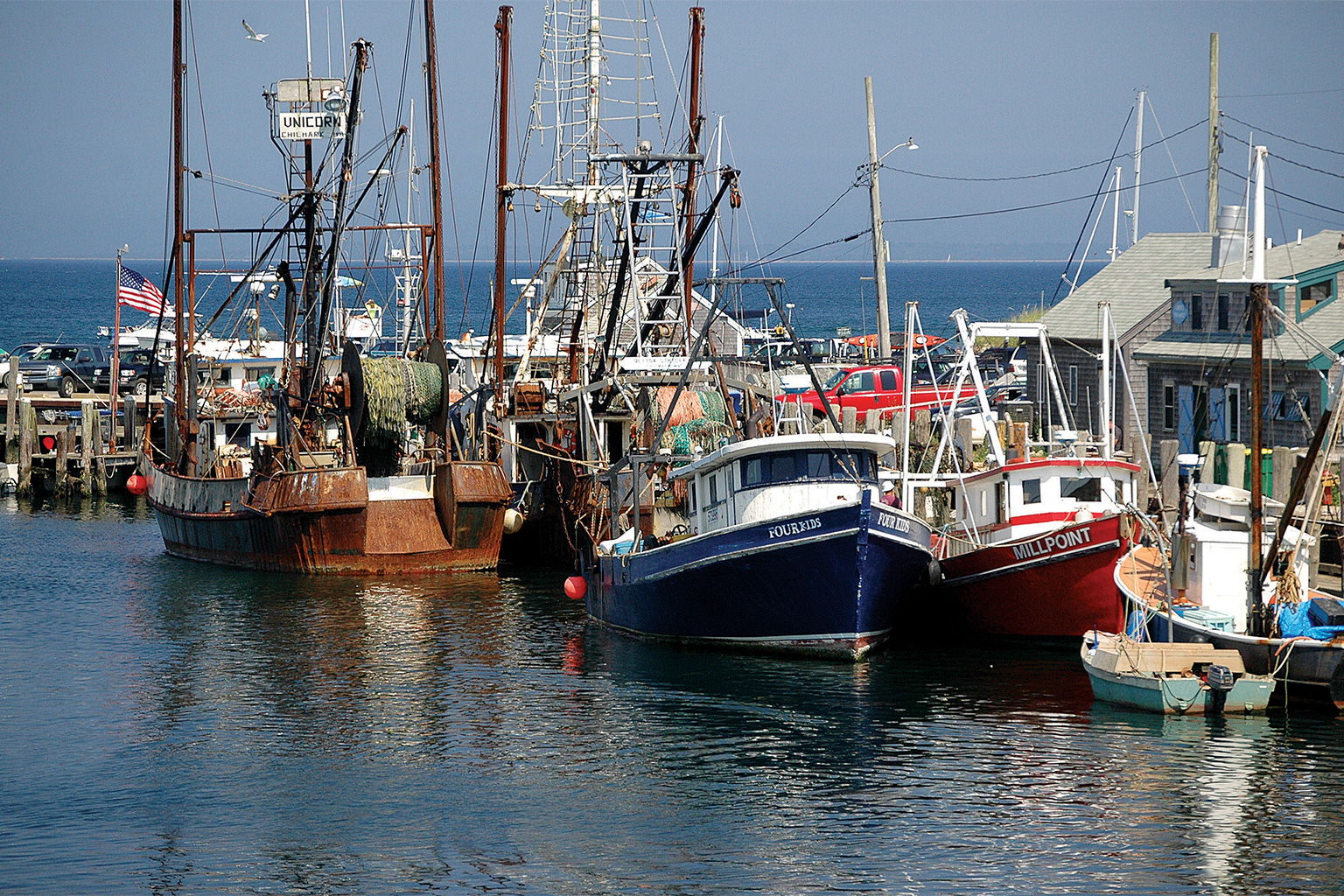
Once they close, there’s little hope for getting back into those areas, and the prospect of more closures covering even greater stretches of ocean looms as the connection between entanglements and the declines in the right whale population has crystallized.
On top of the court cases aimed at forcing regulatory agencies to further restrict fishers, the lobster industry is increasingly having to defend its practices. The Monterey Bay Aquarium Seafood Watch program recently added American lobster caught off the eastern coasts of Canada and the U.S. to its red list, recommending that consumers avoid it because of the threat traditional lobstering gear poses to right whales. The group also red-listed snow crab from the Canadian Atlantic, which is also caught with fixed-gear pots.
On-demand gear offers a potential avenue for fishers to return to the closed grounds that Caron favors. She said that while the direction of the road map toward opening closed areas to on-demand fishing was encouraging, she was disappointed that it came without a concrete timeline and only calls for “continued scientific exploration.”
At this point, though, the use of on-demand gear in a place like Cape Cod Bay with its high seasonal concentration of whales makes biologists nervous.
“The question is, what level of risk is acceptable?” Pettis said. “Even if you put on-demand gear in there, you have increased the risk somewhat by introducing increased vessel traffic. But also, there is line in the water for some period of time.”
Those uncertainties have even opened up cracks within the lobstering community. In April 2022, a group of lobster fishers successfully lobbied the state of Massachusetts to halt a proposal to test on-demand gear between February and May, when the state’s waters are closed. They argued that any entanglement of right whales stemming from this testing would jeopardize not only the future of on-demand gear but the lobster fishery itself.
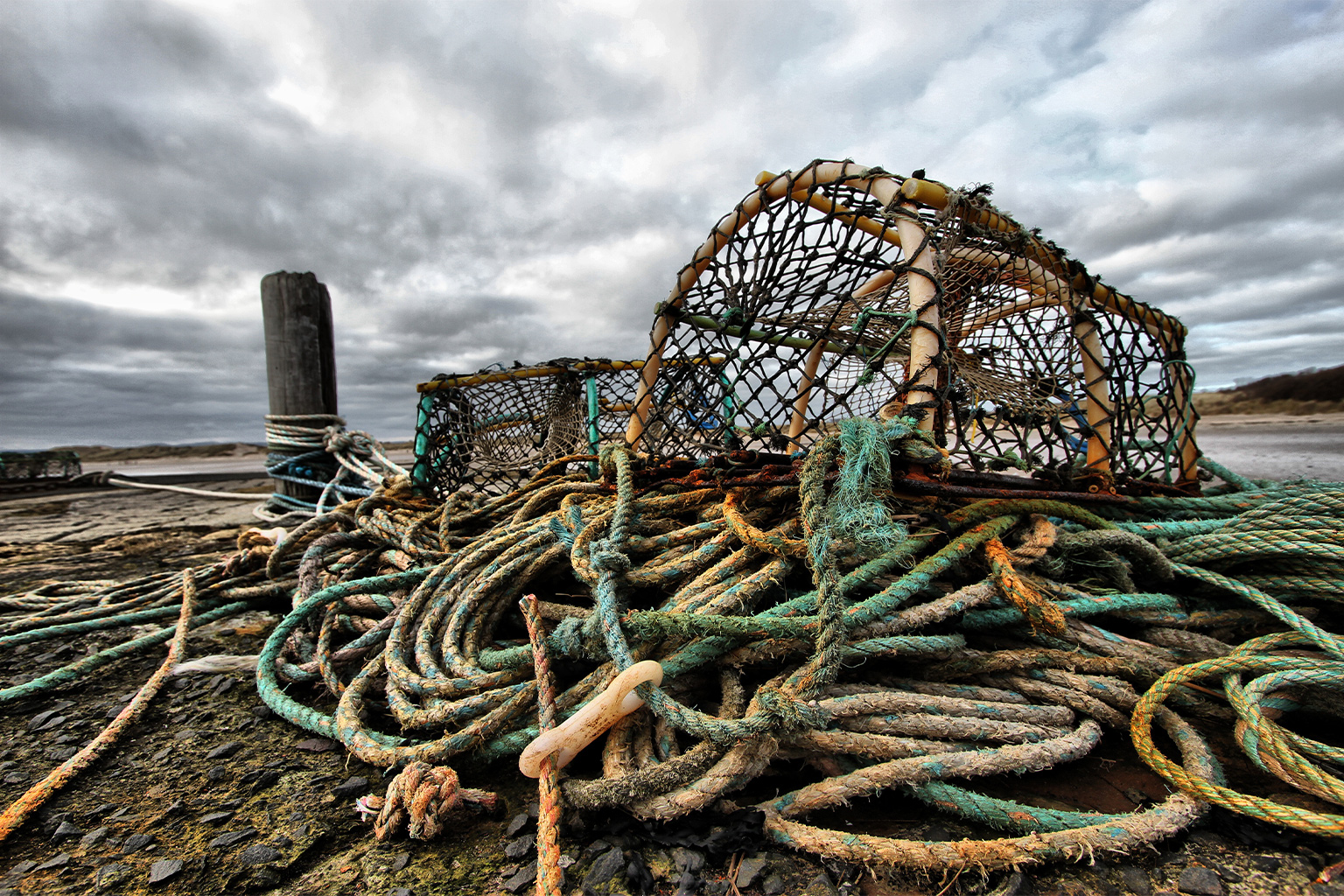
‘The vanguard’
Tensions aside, Mayo said the commitment of fishers, whom he called “as good stewards of the ocean as anybody,” has been and remains critical to saving the North Atlantic right whale.
“They are the vanguard of a new [way of] fishing,” he said.
On-demand gear could lead the way toward solving this “global” issue, Asaro said. Fixed fishing gear entraps all manner of unintended quarry, including sharks, turtles and other whales. The threat has diminished the numbers of many species, though none faces the right whale’s long odds for survival.
“This isn’t a lobster and right whale problem,” Asaro said. “It’s a fixed gear fishery and bycatch problem. And if right whales were to go extinct, the problem wouldn’t go away.”
Though the goal currently isn’t universal adoption, he said that NOAA is trying to get on-demand rigs into the hands of as many fishers as possible. The Northeast Fisheries Science Center runs a “lending library”; fishers can borrow from a storehouse of 170 pieces of on-demand gear and try them out under the agency’s permit, giving skeptical fishers a chance to test different designs. The library also gives NOAA the chance to collect feedback on how each system works in practice.
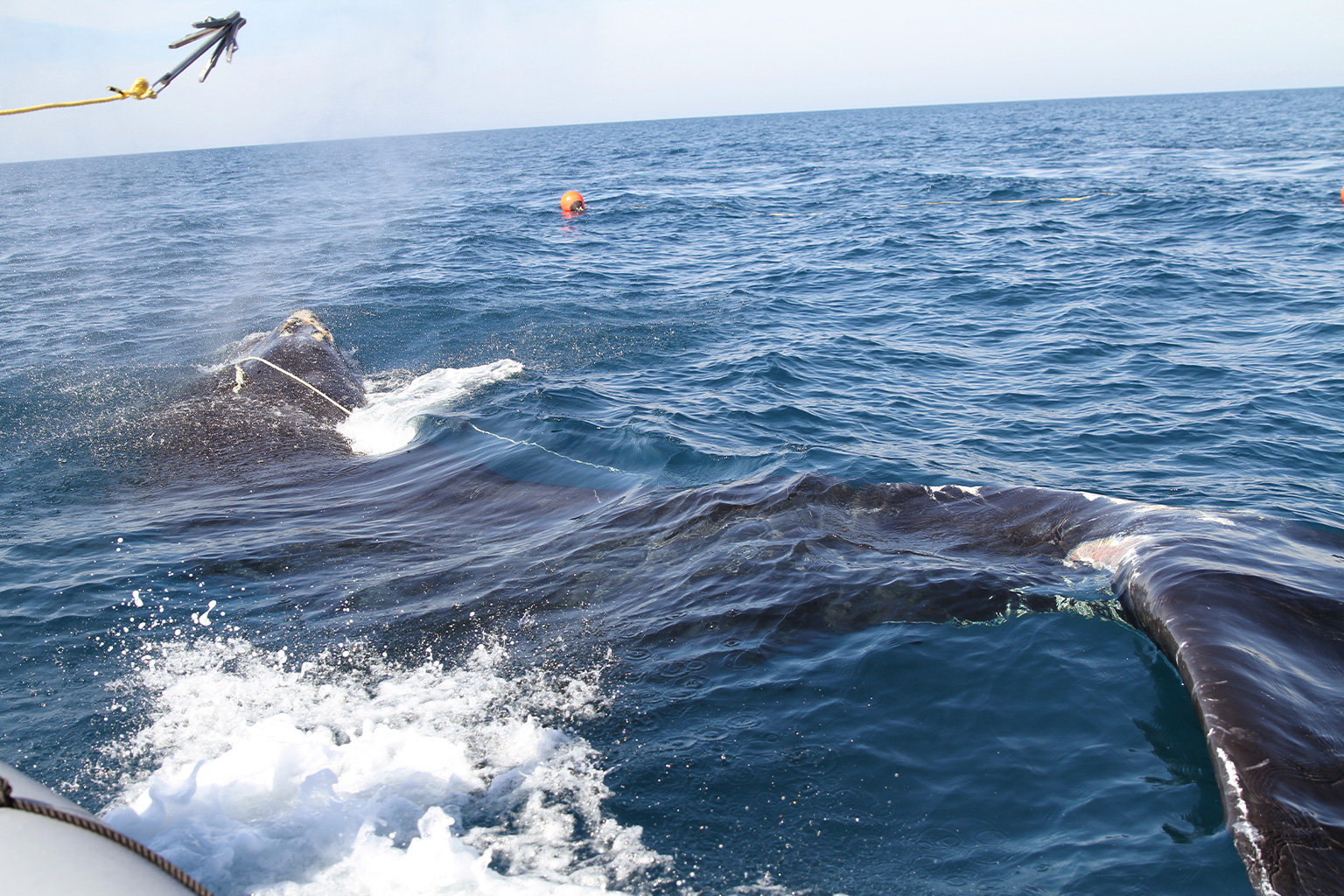
Asaro said trials have begun to address the concerns that fishers have about a new way of fishing. Many worry, for example, that the gear would move around on the bottom, and that without a line attaching traps to a buoy at the surface, they could lose what is today very expensive equipment.
Tests have shown that, on the contrary, an on-demand setup shifts less than its traditional counterpart, in part because it doesn’t have a vertical line acting “like a sail” in ocean currents, Asaro said. Less movement could also reduce the amount of lost “ghost gear” floating in the water column that could ensnare right whales and other marine life, he added.
Asaro acknowledged the learning curve that exists for fishers in how they deploy and retrieve the gear. Engineers are also working on a single monitoring application that would let both regulatory authorities and fishers “see” on-demand gear from any manufacturer on the ocean bottom. With a universal app, regulators could check that traps are legally set, and fishers could avoid setting their gear on top of others’ traps.
“A lot of work has … already gone into where we are today with on-demand gear, but so much more has to be done on all fronts — on the outreach side, on the regulatory side, on the gear research side,” Asaro said. “It’s not ready for widespread adoption now, and it won’t be tomorrow, but there are clear steps that we can take now to get there.”
Getting “there” — in the form of fishing gear that allows fishers to make their harvests while also substantially notching down the risk to right whales — is what brings hope to those involved. To some, resolving the entanglement problem feels tantalizingly close.
“It’s exciting to see where we’ve come over the last even five, six, seven years on the on-demand ropeless front,” Pettis said. “It is not difficult to see a future not too far away where we really can make some broad, impactful changes that will help this species.”
Still, a singular truth has surfaced from the struggle to save the North Atlantic right whale, despite the host of unknowns that still cloud our understanding of this enigmatic animal and its relationship with an ocean environment that’s so heavily shaped by humans.
“One thing I think we do know is if it keeps going like this without on-demand fishing … they will go extinct,” Mayo said. “We’re going to see the end of the species.”

Banner image: A right whale and its calf in January 2022. The mother had been entangled in fishing rope since March 2021. Image by Florida Fish and Wildlife Conservation Commission/NOAA via Flickr (CC BY-NC-ND 2.0).
John Cannon is a staff features writer with Mongabay. Find him on Twitter: @johnccannon
Citations:
Crowe, L., Brown, M., Corkeron, P., Hamilton, P., Ramp, C., Ratelle, S., … Cole, T. (2021). In plane sight: A mark-recapture analysis of North Atlantic right whales in the Gulf of St. Lawrence. Endangered Species Research, 46, 227-251. doi:10.3354/esr01156
Kraus, S. D., Hamilton, P. K., Kenney, R. D., Knowlton, A. R., & Slay, C. K. (2001). Reproductive parameters of the North Atlantic right whale. Journal of Cetacean Research and Management, 231-236. doi:10.47536/jcrm.vi.285
Moore, M., Bogomolni, A., Bowman, R., Hamilton, P., Harry, C., Knowlton, A., … Touhey, K. (2006). Fatally entangled right whales can die extremely slowly. In OCEANS 2006 (pp. 1-3). IEEE. doi:10.1109/oceans.2006.306792
Pershing, A. J., Alexander, M. A., Hernandez, C. M., Kerr, L. A., Le Bris, A., Mills, K. E., … Thomas, A. C. (2015). Slow adaptation in the face of rapid warming leads to collapse of the Gulf of Maine cod fishery. Science, 350(6262), 809-812. doi:10.1126/science.aac9819
Pettis, H. M., Pace III, R. M., & Hamilton, P. K. (2020). North Atlantic right whale consortium 2019 annual report card. Report to the North Atlantic Right Whale Consortium.
FEEDBACK: Use this form to send a message to the author of this post. If you want to post a public comment, you can do that at the bottom of the page.
